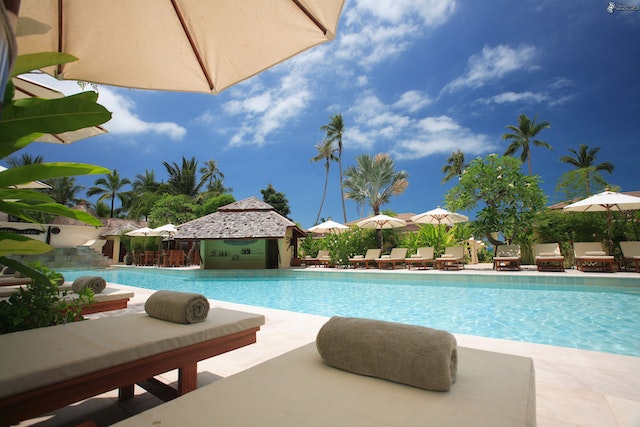Whether you’re a beginner or a seasoned diver, there are several things you need to know about the Little Cayman beach resort dive packages. From North-side walls and Stingray City to extended-range diving and Sharksbill and Loggerhead turtles, this article will help you make the most of your diving trip to the Cayman Islands.
Stingray City
Located in the North Sound of the Grand Cayman Islands, Stingray City is a series of shallow sandbars in the North Sound. A popular destination for diving and snorkeling, Stingray City, has become one of the top attractions in the Cayman Islands.
Stingray City tours are available from several different companies. These tours vary in length and price.
The full-day excursion costs US$65 for people 12 and older, while a half-day tour costs $40 for kids ages 4-11 and US$20 for children under four. Full-day tours include a beach lunch, snorkeling equipment, and light refreshments.
Stingray City tours can be supplemented with a visit to the Turtle Center, a world-famous facility where divers can meet and interact with the stingrays. The Turtle Center also features a water slide, a turtle touch tank, and a shark tank.
The Turtle Center is also home to the world’s giant green turtles. Its gift shop is now open to the public.
The Turtle Center Adventure tour includes a visit to the Turtle Touch Tank, a Shark Tank, and a tour of the Coral Gardens and Stingray City. In addition, tours include a stop at Starfish Point, where guests can hand-feed stingrays.
North-side Walls
Located in the north of Grand Cayman, the North-side wall of the island offers shore diving opportunities. Divers can explore miles of wall formations and swim among thousands of colorful marine life. These underwater attractions are unforgettable experiences.
Dramatic sheer drop-offs and a wealth of fish life characterize the North-side wall of Grand Cayman. It is also home to eagle rays, turtles, and hammerhead sharks.
The North Wall of Grand Cayman is 1800 feet deep, surrounded by reefs, and filled with sponges. Divers can explore deep ravines, tunnels, and maze-like networks of caverns. Throughout the wall, colorful sponge growth, colored sponges, and sponge-filled coral reefs are expected.
The East End of the island has many dive sites. Some are high-relief formations, such as Iron Shore Caves, and the surge sculpts others. These sites are also home to various marine life, including garden eels and conch.
Devil’s Grotto, Eagle Ray Pass, and Stroke Canyon are some of the best dive sites on the North Wall. These dive sites are suitable for beginners and advanced divers. The day’s first dive will take you to a coral plateau where you can swim among various sea creatures. The day’s second dive typically features coral heads, a deeper wall, and many animals.
Sharksbill and Loggerhead Turtles
Whether diving in the Cayman Islands or swimming on the Gili Islands, you will have a chance to see these enchanting creatures. They are a popular marine species and have been around for 150 million years. They are also among the cutest animals in the sea.
While there are several different species of sea turtles, the largest is the loggerhead. This species can grow up to two meters long. It has a beak-like mouth and is easily spotted while feeding.
The hawksbill turtle is smaller than the loggerhead and eats sea sponges and other marine life along the reef. It is easy to spot a hawksbill while feeding as well.
The best way to get a close-up view of a hawksbill is to snorkel in the Cayman Islands. These turtles can be seen frolicking among coral branches.
The Cayman Islands also have a few other sea turtle species. These include green, leatherback, and loggerhead turtles. These turtles nest on the island’s beaches, but they are not as common as they used to be.
There are several diving locations in the Cayman Islands where you can see hawksbill and loggerhead turtles. These animals are very popular with snorkelers and divers.
Stingray City is a great place to see these sea turtles. Several stingrays are amiable—other marine animals, such as morays, angelfish, and lettuce slug nudibranchs. You will have the best chance of seeing these animals during the summer.
Extended Range Diving
Known for its incredible visibility, the Cayman Islands are home to many scuba diving sites. Some popular spots include Eden Rock Diving Center, Sunset Divers, and Don Fosters.
There are many options for recreational divers as well as technical divers. The island is home to several dive operators who can certify divers to several levels. In addition, the SSI TechXR training program is a great way to learn more about diving and become an experienced diver.
Aside from the many dive operators, Cayman is home to several different types of dive sites. These include shallow reefs, deep wall dives, and drift dives. All are ideal for recreational and technical divers alike.
The Cayman Islands are home to various corals and other marine life. Hawksbill turtles are often seen in the waters year-round. In addition, there are schools of barracuda and silversides that frequent Cayman Island dive sites.
Many divers love to explore Cayman’s walls and drop-offs. There are many options available, such as dive trips and boat excursions.

